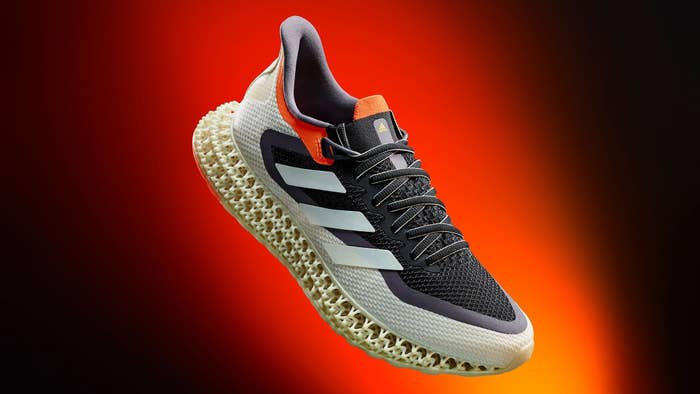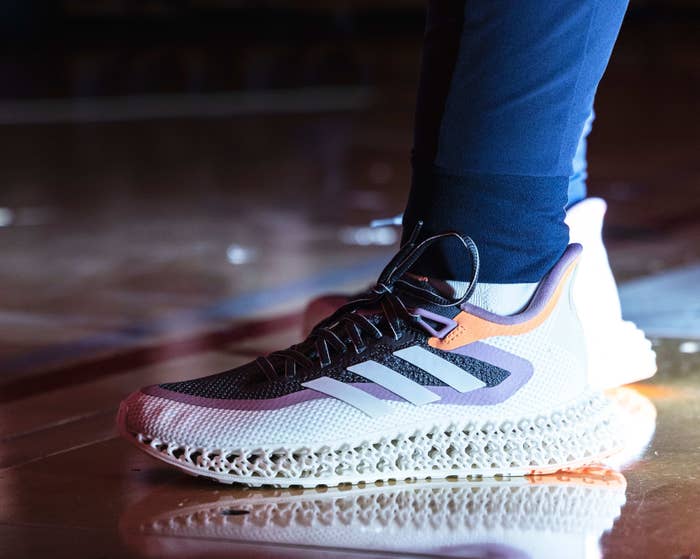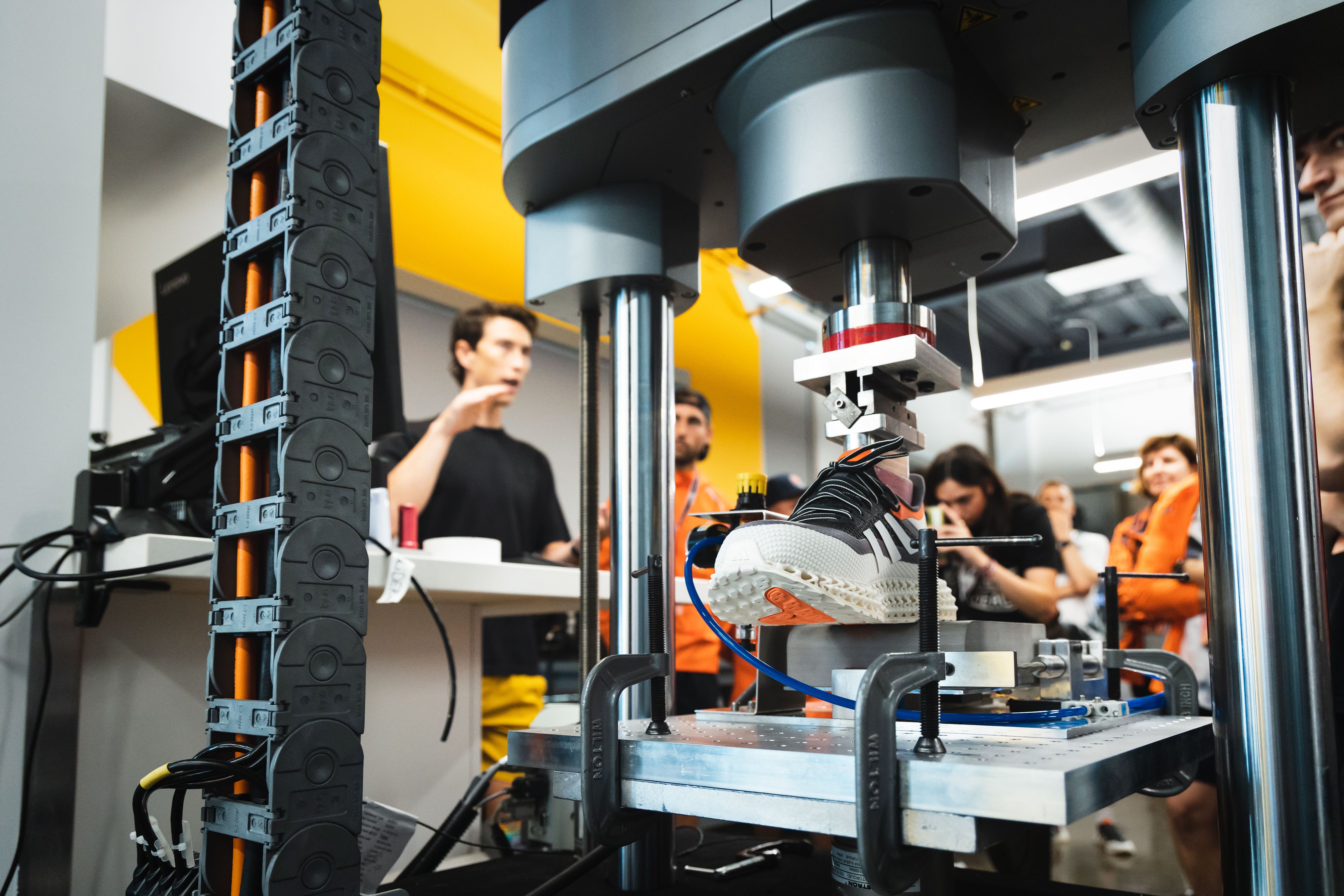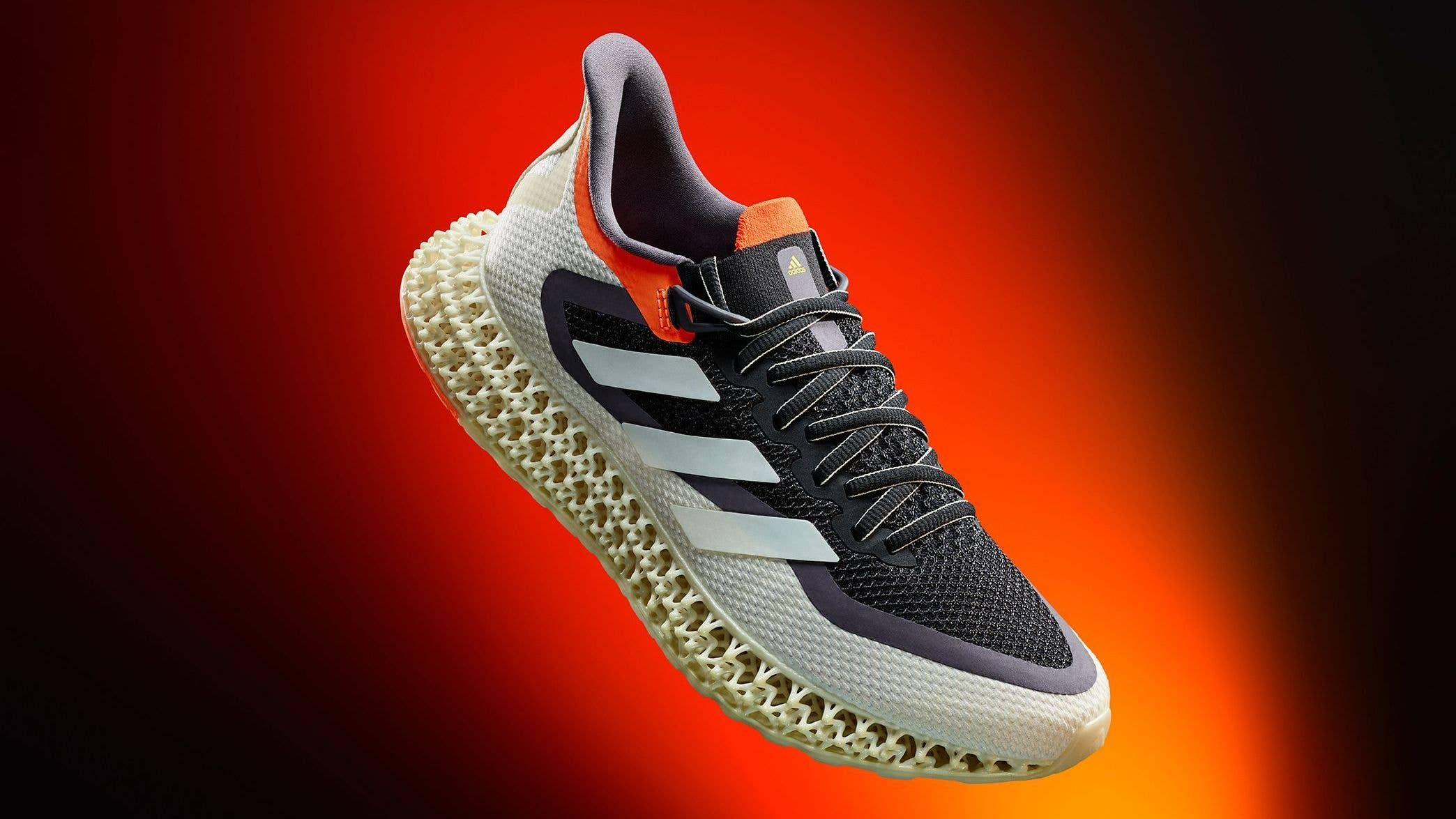
If you ask a casual sneakerhead or a random person on the street the first thing that they think of when you mention Adidas, they might say Yeezy,Pharrell, or Stan Smith—two of their superstar collaborators, or one of the most iconic sneakers of all time. But to Adidas, they are an innovation-first company, and there is no better example of that than its new 4DFWD 2 running shoe.
Earlier this week, Complex traveled to Adidas’ US headquarters in Portland, Oregon, to get a firsthand look at the technology behind the new 4DFWD 2 and test it out for ourselves before its launch. We spoke to a number of experts on the shoe and its tech, including Charlotte Heidmann, the project’s senior manager, Jason Rolland, senior vice president at Carbon (Adidas’ 3D-printing partner), and Anette (Peko) Hosoi, a professor of mechanical engineering at the Massachusetts Institute of Technology.
One message was clear from all parties involved: that the 4DFWD 2 is currently the only 3D-printed sneaker on the market created with performance in mind. A duo of colorways is set to release on Sept. 1 for $200.

“Innovation in running is always something that the consumer expects,” says Heidmann. “You need to continue to innovate and find new improvements on performance.”
In comparison to past 4D models, Heidmann explains that the 4DFWD 2 boasts 23 percent more cushioning while simultaneously reducing a runner’s peak braking force by 15% by utilizing the newly-designed bowtie lattice. The cushioning system is also lighter, weighing in at 350G (Men’s) and 293G (Women’s), which further increases the runner’s performance.

When developing the technology for the shoe’s midsole, Adidas set out to solve a major problem that every runner faces, which is the force created by the ground pushing against you with each and every step. Carbon worked with Adidas to create the first-ever bowtie-shaped lattice midsole that aims to transform vertical pressure into horizontal force and propel the runner forward rather than slowing them down.
On top of that, Carbon has developed a new method of 3D printing using UV lighting that has drastically decreased the time it takes to print the shoe’s midsole. In the past it could take close to a day to get something like that printed, and this new method has gotten it down to around 30 minutes for every pair of soles.
“One of the other big benefits of the 3D printing is the design flexibility,” Rolland says. “Everything is digital right, you just have this empty space that you’re filling with files. You can get into much faster product development cycles. We can make new cushioning systems like these lattices that offer performance benefits and other geometries that you can’t make any other way.”

Rolland also tells Complex that when a midsole with Boost or EVA is developed, it can take up to 6–12 months to get new tooling created, and it lacks the customizability and ease of changing things up that the 3D printing method offers.
Personalization and the versatility of the sole unit is a major emphasis for the entire project. In the future, Adidas hopes to continue developing the tech in a way that helps it become practical not only for other sports, but for aesthetic purposes as well.
“You always need to have a practical aspect first before you go into the visual,” Heidmann says. “In the future there will be small steps that lead into personalization. That’s our ultimate goal in the end, to have a shoe that you can personalize in a way that suits everyone.”


